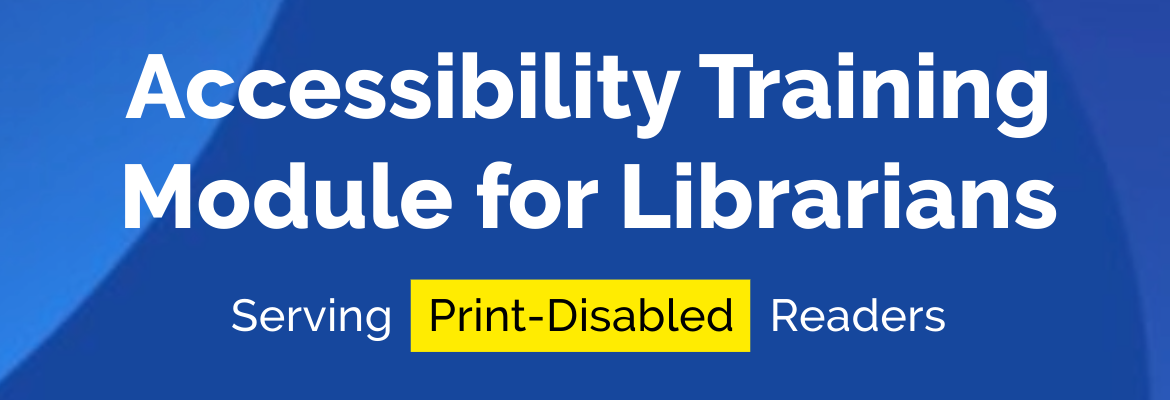
Breaking Barriers: Enhancing Library Accessibility for Readers with Print Disabilities
People with barriers to reading traditional printed books face challenges in education, employment, social inclusion, civic engagement, and even in reading for enjoyment. Barriers can include visual impairments such as blindness; cognitive disorders, including dyslexia; and mobility limitations that make holding or turning the pages of a book difficult, if not impossible. Studies at Yale [1] and Cornell [2] estimate the percentage of the population who face these barriers to be over 20 percent, so these library users come through our physical and virtual “doors” every day seeking to access information, books, and learning opportunities. Our profession’s commitment to ensuring equity in access to our resources dictates we go the extra mile to better serve these patrons.
A great deal of technology and equipment exists to meet the needs of these users, ranging from a simple magnifying glass to optical character recognition and reading systems. The number of text-to-speech engines is greater than 10, and mobile phones and tablets now come with a wealth of accessibility tools. There are even Braille e-readers. Besides these tactile and tangible tools, the last five years have seen a revolutionary change in digital publishing and reading applications, due in part to the commercial success of e-books. This success has encouraged publishers to consider new features and improvements to the reading experience. E-books and mainstream digital readers now integrate features that allow persons with disabilities or reading barriers to access them. Digital books and information are no longer locked in fixed formats that work only for the perceived mainstream. Improved file formats and customizable reading applications on modern devices allow for personalized reading options for all readers.
Many in the library profession could not keep up with this rapid development in technology. Awareness of and comfort with these technologies remains limited both among library users and library staff. Prior to creating this module, the Ferguson Library project team wrote and administered a survey of the library community to assess both needs and knowledge gaps. Our partners in this project were Benetech, a California-based nonprofit and creator of Bookshare, an accessible e-book library; and a nine-member steering committee with representatives from across the country. The survey showed that over 50 percent of the 250 respondents had little or no knowledge of disabilities related to reading traditional print materials, and a surprising 76 percent had received no training in using assistive technology in their library. An even larger number did not know accessibility metadata or customizable reading options existed. This training module addresses library staff’s need for targeted information and understanding of reading barriers, the tools to overcome them, and their relevance for the readers in their community.
This Reading for Accessibility and Inclusion training module was made possible with a grant from the Institute of Museum and Library Services (IMLS) through the Laura Bush 21st Century Librarian Program. In their own words, the Laura Bush program supports developing a diverse workforce of librarians to better meet the changing learning and information needs of the American public by enhancing the training and professional development of library and archives professionals. Our work supports improvement of services for people with disabilities and barriers that affect their ability to read traditional printed materials by developing educational resources for library staff to better serve this multi-faceted constituency. This training module is intended to be the first in a series of scaffolded and actionable modules for library staff to increase their comfort level with accessible e-book formats and reading tools.
When completed, the training module will provide the learner with the following:
- Understanding the different types of disabilities, or combination of disabilities
- Understanding what makes digital resources accessible and the different levels of accessibility
- What metadata tells us
- Services and technology to meet the individual need
- Knowing what and how to use the technology in the library
- Determining what the user is comfortable with
- Outside services that can be accessed by the use
- Resources for inclusion and diversity training
- Resources for learning about AT, including websites, state-level services, petting zoos
- Advocating for accessible digital content